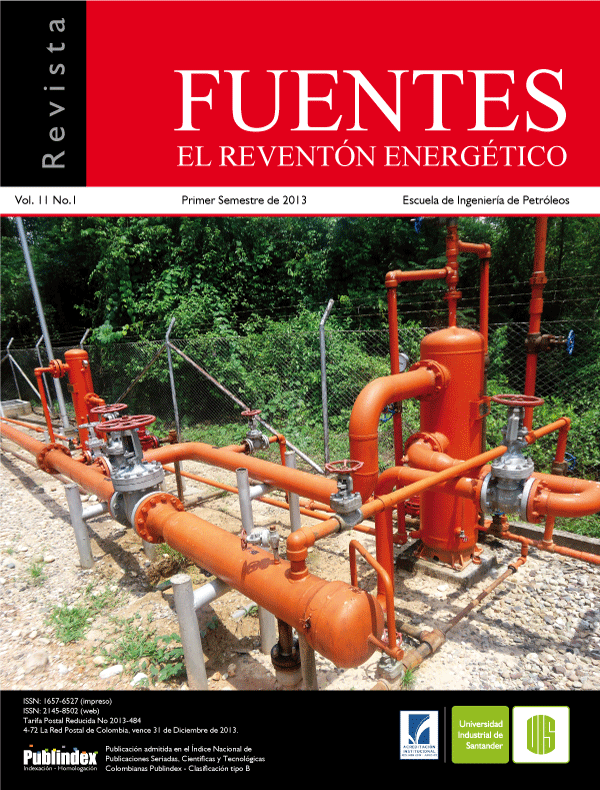Implementation of ultralight proppants in hydraulic fracking
Published 2013-11-06
Keywords
- Hydraulic fracturing,
- Ultra lightproppants - Ultra light weighted proppants,
- Fracture,
- Lab methodology
How to Cite
Abstract
One of the most common work model used to contribute to the oil supply is based in the local stimulation of producing wells, where is intended to minimize the skin around the perforation and increase the flow available area. Within these techniques the hydraulic fracturing stands out, in which a series of fractures are induced in the net pay by the injection of a high pressured fluid and a granular material.
This work studies and evaluates the use of different ultralight proppants as supporting agents in hydraulic fractures, physical properties of these materials are determined and analyzed in the laboratory to prove different work scenarios.
From the results and the collected data from other studies, a structured methodology is designed with established criteria and limiting factors to make a conscious choice.
Downloads
References
2. ECONOMIDES, M., and MARTIN, T. Modern fracturing enhancing natural gas production. Energy Tribune Publishing, 2007. ISBN: 1604616880.
3. RICKARDS, A.R. BRANNON, H.D., WOOD, W.D., and Stephenson, C.J. High Strength, Ultralightweight Proppants Lends New Dimensions to Hydraulic Fracturing Applications. SPE Prod & Oper. 2006, vol 21, núm 2, p. 212-221. SPE-84308-PA.
4. PEDROSO, C.A., et al., “Lightweight proppants: solution for gravel packing horizontal wells under extreme conditions”, 2006.
5. WOOD, W.D., et al., “Ultralight weight proppants development yields exciting new opportunities in hydraulic fracturing design”. Formation Damage Control, 15-17 February 2006. Lafayette, Louisiana U.S.A.. ISBN: 978-1-55563-239-7.
6. AMERICAN PETROLEUM INSTITUTE, API RP 19C / ISO 13503-2:2008. Petroleum and natural gas industries - Completion fluids and materials - Part 2: Measurement of properties of proppants used in hydraulic fracturing and gravel-packing operations”, 2008.
7. SERRANO, Daniela., “Factibilidad técnica y económica del uso de propantes ultralivianos en el fracturamiento hidráulico de pozos: aplicación en un campo colombiano”. Director: Cesar Augusto Pineda Gómez. Universidad Industrial de santander, Escuela de ingeniería de petróleos, 2011.
8. BRANNON, H. D. and STARKS, T. R., “Maximizing return on fracturing investment by using ultra-lightweight proppants to optimize effective fracture area: Can less really deliver more?. SPE Hydraulic Fracturing Technology Conference, 19-21 January 2009. The Woodlands, Texas. ISBN: 978-1-55563-208-3
